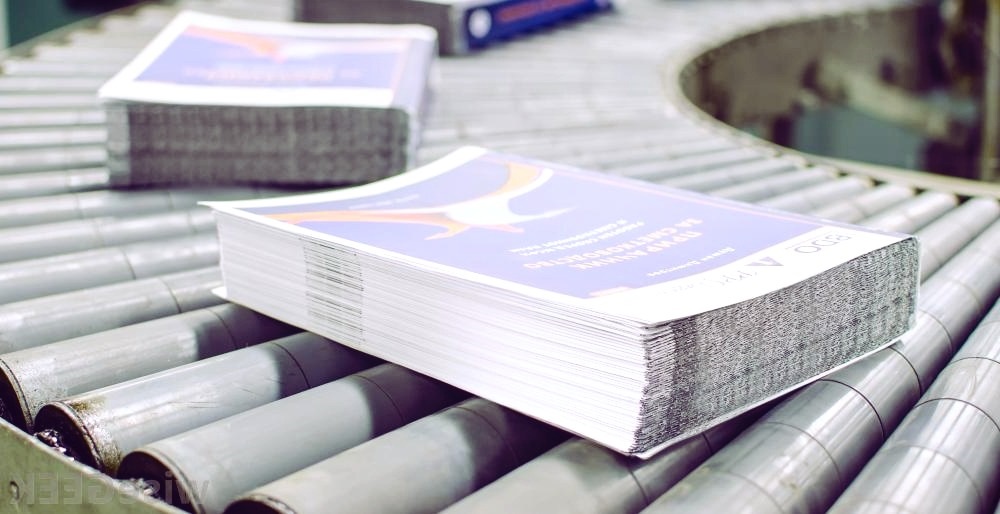
Walk through any major Nigerian city and you’ll see the paradox of the country’s book economy in plain view: a vibrant culture of readers and writers, and—often just a few feet away—piles of pirated books sold for a fraction of their official prices. This tension defines the state of Nigerian publishing today. Creativity is abundant. Demand is real. But the economics that should sustain authors, printers, publishers, and booksellers are under relentless pressure from piracy, distribution bottlenecks, and macroeconomic shocks. The industry’s challenge is no longer merely “how to print and sell a book,” but how to build a business model that survives the Nigerian operating environment.
Piracy: A Parallel Market That Won’t Go Away
Piracy is not a nuisance—it is a parallel supply chain. From high-resolution scans that circulate on messaging apps to offset-printed knockoffs entering through porous borders, unauthorized copies siphon value at every step. The Nigerian Publishers Association (NPA) has repeatedly warned that piracy has reached “frightening” levels, calling for tighter enforcement and coordinated action by the Nigerian Copyright Commission (NCC), Customs, and Police. Recent statements highlight a worrying new trend: the mass importation of high-quality pirated books, which undercuts legitimate editions on price and availability.
Digital piracy presents another headwind. Even when readers want to purchase legally, files often surface on Telegram, WhatsApp, and informal cloud links. The Copyright Act 2022—signed into law and now in force—finally gives rightsholders a clear “notice and takedown” pathway to compel service providers to remove infringing content. That’s progress, because a modern book market needs digital remedies, not just warehouse raids. But enforcement capacity, speed, and cross-platform cooperation remain the big questions.
For a sense of the stakes, consider Okadabooks, Nigeria’s pioneering e-book platform that, for a decade, gave thousands of writers a way to reach readers nationwide via phones. In November 2023, the company shut down, citing “insurmountable” macroeconomic challenges. While piracy wasn’t the only factor—currency volatility, payment frictions, and high customer-acquisition costs all matter—the closure underscores how fragile digital reading businesses can be in the current climate.
Distribution: The Long Road from Printer to Reader
If piracy steals revenue, distribution leaks it. Nigeria’s book logistics are hampered by patchy road infrastructure, fragmented retail, and cash-flow constraints across the chain. Outside a handful of dependable independents and chains, many booksellers cannot absorb large orders, settle promptly, or forecast demand reliably. Publishers, in turn, run smaller print runs and hold more inventory risk, pushing unit costs up.
Yet there are bright spots. Entrepreneurial booksellers like Rovingheights have proven that consistent curation, nationwide fulfillment, and community-driven marketing can scale a retail book business. Co-founder Tobi Eyinade has been emphatic: “Africans do read,” pointing to the store’s growth as evidence that demand exists when supply is reliable and discoverability is strong. It’s a vital counter-narrative to the fatalism that often surrounds the sector.
For publishers with global ambitions, pairing Nigerian editorial centers with international distribution has been one useful tactic. Cassava Republic Press, for instance, built Nigerian operations while securing distribution through Consortium/Ingram in the United States and partners in the U.K.—a hybrid that widens markets and reduces dependence on a single territory’s logistics.
Costs and Currency: The Economics Behind the Crisis
Publishing is a foreign-exchange-exposed business in a country that imports most of its paper and many inputs. When the naira weakens, the price of paper, plates, ink, and even packaging rises, often multiple times per year. Academic and industry analyses since the pandemic also point to post-COVID supply-chain disruptions, paper shortages, and printing delays—conditions that compress already-thin margins and encourage consumers to seek cheaper (often pirated) alternatives.
In this environment, pricing becomes a balancing act: set prices too high and you push readers to the street stalls; set them too low and you risk insolvency. The result is an affordability squeeze that harms every stakeholder, from authors whose royalties are tied to net receipts, to printers who cannot plan capital investments.
How Piracy Actually Works (and Why It Persists)
Understanding piracy’s mechanics helps to design better countermeasures:
Source leakage. PDF proofs leak from legitimate channels—authors, editors, printers, reviewers—or are created post-publication via high-resolution scanning.
Industrial reproduction. Counterfeiters use decent paper stocks and four-color offset to produce convincing replicas, sometimes altering covers slightly to evade detection.
Street and online distribution. Books move through established informal networks—markets like Alaba for media, bus-park vendors, roadside stands—or circulate in private digital groups.
Price arbitrage. Pirates win on price and speed to market, especially for high-demand titles, exam prep materials, and school texts.
Historically, Nigerian authorities have reported large seizures of pirated media across categories (books among them), but seizures treat symptoms, not causes. Without credible disincentives, a robust lawful supply, and easier legal purchasing, the pirate value proposition remains attractive.
What Might a Sustainable Model Look Like?
Sustainability won’t come from one silver bullet. It will come from stacking many small wins—legal, technological, commercial, and cultural—until buying a legitimate book is easier, safer, and more rewarding than the alternatives.
1) Make the Law Work in the Digital Age
Operationalize notice-and-takedown. The new Copyright Act’s digital provisions are only as strong as their implementation. Publishers should standardize takedown workflows (templates, evidence packs, repeat-offender lists) and appoint dedicated staff or agencies to pursue infringements across platforms. The NCC can amplify this by publishing clear service-level timelines for platforms and penalties for non-compliance.
Target import pipelines. NPA’s warning about mass importation of high-quality pirated books points to customs chokepoints. Joint task forces (NCC–Customs–Police) should prioritize high-volume routes and focus on repeat consignors. Seizures should be publicized with identifiers (ISBNs, covers) to alert retailers.
2) Price and Package for the Real Market
Tiered pricing and formats. Offer student/educator editions using lower-cost paper, monochrome interiors, or compact trims—priced to leave pirates little room. Bundle value that pirates can’t mimic: access codes for bonus chapters, author Q&As, or classroom slides.
Preorders and subscriptions. Sustained preorder drives via social communities reduce inventory risk and improve cash flow. For backlists and genre fiction, curated subscription clubs (monthly picks delivered or unlocked digitally) can smooth revenue.
Library partnerships. Strengthen institutional deals with universities, secondary schools, and state libraries for licensed e-lending and classroom sets—mechanisms that put legal copies directly where demand is concentrated.
3) Strengthen Distribution Through Collaboration
Regional hubs and shared logistics. Publishers can pool inventory in Lagos, Abuja, Port Harcourt, and Kano hubs, sharing last-mile couriers and returns processing. A cooperative model lowers per-unit shipping costs and improves fill-rates.
Retail enablement. Offer independent booksellers real-time inventory feeds, small-batch replenishment, and flexible credit terms. The Rovingheights example shows that dependable supply plus community engagement builds demand.
Diaspora pipelines. For titles with global appeal, pair Nigerian publication with international distribution partners (e.g., U.K./U.S. wholesalers), following the Cassava Republic playbook. This hedges currency risk and captures diaspora demand at sustainable price points.
4) Use Technology as a Trust and Traceability Layer
For print:
Visible + invisible watermarking. Embed scannable QR seals tied to a verification page and use micro-dot or forensic watermarks on key pages.
Serialised ISBN stickers. Retailers can authenticate stock; customers can register purchases for perks (warranty, giveaways, future discounts).
For digital:
Personalized watermarks. Rather than intrusive DRM, stamp each purchase with the buyer’s name/email on every e-book page footer—privacy-safe but discouraging casual sharing.
Frictionless legal access. If legal e-books are a hassle to pay for (cards declined, geoblocking), piracy will win on convenience. Payment options should include USSD, bank transfers, and wallet rails common to Nigerian users.
5) Rebuild the Legal E-Reading Ecosystem
OkadaBooks’ closure left a vacuum. Bambooks’ subscription model has tried to meet some of that demand over the years, positioning itself as a low-cost digital library. Reviving a robust e-reading ecosystem will likely require a consortium approach: publishers supply catalogs on generous but protected terms; telecoms zero-rate or discount data for reading apps; and fintechs provide easy micro-payments. Public-private pilots—tied to state library systems or the Nigeria International Book Fair calendar—could demonstrate scale and cost-recovery.
6) Invest in Audience Development (Because Demand Is There)
Nigeria’s problem is not a lack of readers but a broken pathway between reader and book. Consistent author tours, school reading programs, book-club partnerships, and online communities are proven demand engines. Retailers who treat bookselling as community-building (events, newsletters, social content, staff picks) outperform those who simply wait for footfall. The message from successful operators is clear: if you show up for readers, they show up for you.
What Authors Can Do—Now
Think multi-format from day one. Negotiate simultaneous releases (print, e-book, audiobook) to capture momentum before pirates do.
Own your prelaunch. Build a launch team of readers, book clubs, and influencers; drive preorders; and capture emails for direct sales later.
Track the gray market. Encourage readers to report pirate links or suspicious sellers; publish a simple “how to verify a genuine copy” guide on your site and socials.
Diversify revenue. Add workshops, paid newsletters, Patreon-style communities, or limited signed editions that pirates cannot replicate.
A Realistic Optimism
There’s no denying the headwinds: piracy that adapts quickly, distribution that can be costly and slow, and macroeconomic shocks that distort pricing. But there are also credible paths forward. A modernized copyright law provides tools that didn’t exist a few years ago—if industry and regulators use them. Retail innovators are proving demand responds to better service. And publishers who pair local editorial excellence with international distribution are finding sustainable lifelines.
The Nigerian book industry has always been bigger than its obstacles. Its writers win global prizes; its readers surprise cynics; its publishers keep experimenting. The task now is to turn scattered successes into a system: one in which legal copies are easier to buy than pirated ones, authors are paid fairly and promptly, and the pipeline from printer to reader is short, transparent, and resilient.
Sustainability won’t arrive as a headline. It will show up as a thousand small changes: a classroom that gets its books on time; a bookseller that restocks mid-month because a new author talk went viral; a publisher that meets payroll because preorders hit target; a writer who releases her next book because the last one earned out. Stack enough of those moments together and you have what every healthy book market needs: trust—in the product, in the price, and in the promise that stories are worth paying for.

